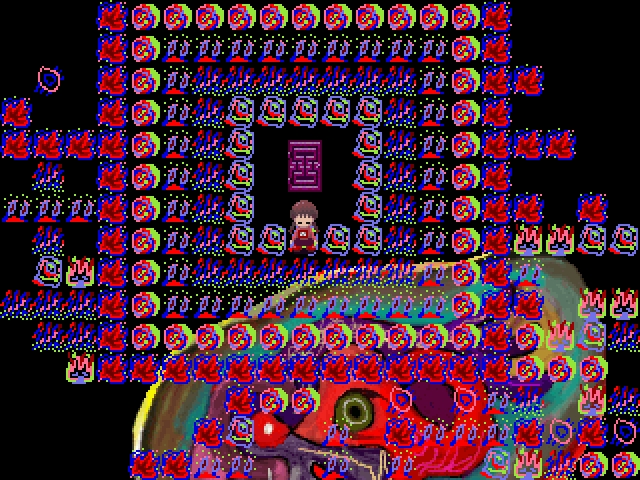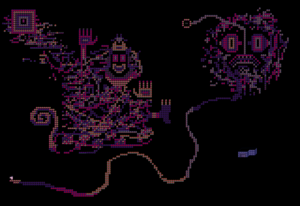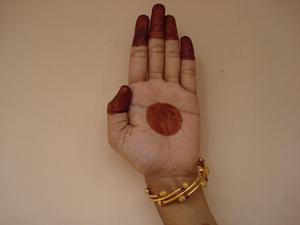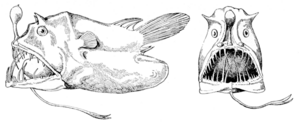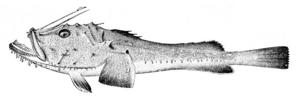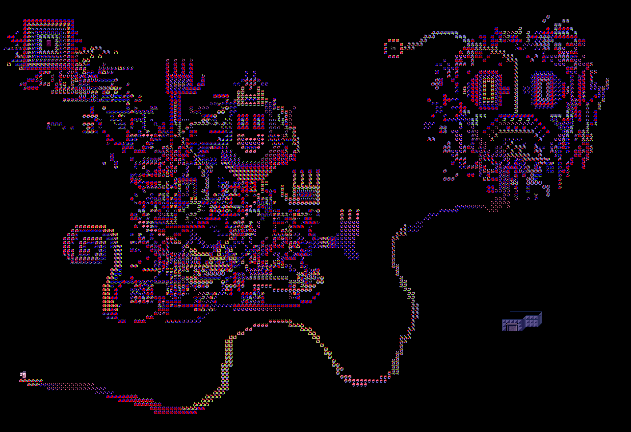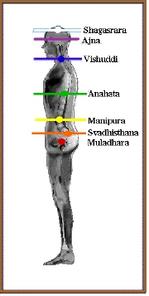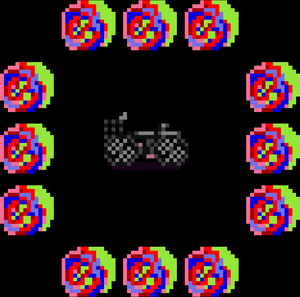>Mt.kiki No edit summary |
>Mt.kiki No edit summary |
||
| Line 34: | Line 34: | ||
==[[Graffiti World]]([http://en.wikipedia.org/wiki/LSD_(video_game) LSD (video game)])== | ==[[Graffiti World]]([http://en.wikipedia.org/wiki/LSD_(video_game) LSD (video game)])== | ||
{| cellpadding="3" cellspacing="0" class="infobox hproduct" style="width: 264px; text-align: left; font-size: 90%; float: right;" | {| cellpadding="3" cellspacing="0" class="infobox hproduct" style="width: 264px; text-align: left; font-size: 90%; float: right;" | ||
! colspan="2" style="text-align: center;"|<span style="font-size: 111%;">LSD</span> | ! colspan="2" style="text-align: center;"|<span style="font-size: 111%;">''LSD''</span> | ||
|- | |- | ||
| colspan="2" style="text-align: center;"|[http://en.wikipedia.org/wiki/File:LSD_Coverart.png] | | colspan="2" style="text-align: center;"|[http://en.wikipedia.org/wiki/File:LSD_Coverart.png ] | ||
|- | |- | ||
|[http://en.wikipedia.org/wiki/Video_game_developer <u>Developer(s)</u>] | |'''[http://en.wikipedia.org/wiki/Video_game_developer <u>Developer(s)</u>]''' | ||
|OutSide Directors Company | |OutSide Directors Company | ||
|- style="background: rgb(240, 240, 240);" | |- style="background: rgb(240, 240, 240);" | ||
|[http://en.wikipedia.org/wiki/Video_game_publisher <u>Publisher(s)</u>] | |'''[http://en.wikipedia.org/wiki/Video_game_publisher <u>Publisher(s)</u>]''' | ||
|[http://en.wikipedia.org/wiki/Asmik_Ace_Entertainment <u>Asmik Ace Entertainment</u>] | |[http://en.wikipedia.org/wiki/Asmik_Ace_Entertainment <u>Asmik Ace Entertainment</u>] | ||
|- | |- | ||
|[http://en.wikipedia.org/wiki/Computing_platform <u>Platform(s)</u>] | |'''[http://en.wikipedia.org/wiki/Computing_platform <u>Platform(s)</u>]''' | ||
|[http://en.wikipedia.org/wiki/PlayStation_(console) <u>PlayStation</u>], [http://en.wikipedia.org/wiki/PlayStation_Network <u>PSN</u>] | |[http://en.wikipedia.org/wiki/PlayStation_(console) <u>PlayStation</u>], [http://en.wikipedia.org/wiki/PlayStation_Network <u>PSN</u>] | ||
|- style="background: rgb(240, 240, 240);" | |- style="background: rgb(240, 240, 240);" | ||
|Release date(s) | |'''Release date(s)''' | ||
| | | | ||
*<sup>[http://en.wikipedia.org/wiki/Japan <u>JP</u>]</sup> October 22, 1998 | *<sup>[http://en.wikipedia.org/wiki/Japan <u>JP</u>]</sup> October 22, 1998 | ||
*<sup>[http://en.wikipedia.org/wiki/Japan <u>JP</u>]</sup> August 11, 2010 (PSN) | *<sup>[http://en.wikipedia.org/wiki/Japan <u>JP</u>]</sup> August 11, 2010 (PSN) | ||
|- | |- | ||
|[http://en.wikipedia.org/wiki/Video_game_genres <u>Genre(s)</u>] | |'''[http://en.wikipedia.org/wiki/Video_game_genres <u>Genre(s)</u>]''' | ||
|Miscellaneous, [http://en.wikipedia.org/wiki/Survival_horror <u>horror</u>] | |Miscellaneous, [http://en.wikipedia.org/wiki/Survival_horror <u>horror</u>] | ||
|- style="background: rgb(240, 240, 240);" | |- style="background: rgb(240, 240, 240);" | ||
|Mode(s) | |'''Mode(s)''' | ||
|[http://en.wikipedia.org/wiki/Single_player <u>Single player</u>] | |[http://en.wikipedia.org/wiki/Single_player <u>Single player</u>] | ||
|- | |- | ||
|[http://en.wikipedia.org/wiki/Digital_media <u>Media</u>]/[http://en.wikipedia.org/wiki/Digital_distribution <u>distribution</u>] | |'''[http://en.wikipedia.org/wiki/Digital_media <u>Media</u>]'''/'''[http://en.wikipedia.org/wiki/Digital_distribution <u>distribution</u>]''' | ||
|[http://en.wikipedia.org/wiki/CD-ROM <u>CD-ROM</u>] | |[http://en.wikipedia.org/wiki/CD-ROM <u>CD-ROM</u>] | ||
|} | |} | ||
| Line 160: | Line 157: | ||
==[[Graffiti World]]([http://ja.wikipedia.org/wiki/%E3%82%A2%E3%83%B3%E3%82%B3%E3%82%A6 アンコウ])== | ==[[Graffiti World]]([http://ja.wikipedia.org/wiki/%E3%82%A2%E3%83%B3%E3%82%B3%E3%82%A6 アンコウ])== | ||
アンコウ(鮟鱇<sup class="reference" id="cite_ref-sakananomekiki_p34_3-0">[http://ja.wikipedia.org/wiki/%E3%82%A2%E3%83%B3%E3%82%B3%E3%82%A6#cite_note-sakananomekiki_p34-3 <u>[3 | アンコウ(鮟鱇<sup class="reference" id="cite_ref-sakananomekiki_p34_3-0">[http://ja.wikipedia.org/wiki/%E3%82%A2%E3%83%B3%E3%82%B3%E3%82%A6#cite_note-sakananomekiki_p34-3 <u>[3</u>]]</sup>、[http://ja.wikipedia.org/wiki/%E8%8B%B1%E8%AA%9E <u>英</u>]: [http://en.wikipedia.org/wiki/Monkfish <u>Monkfish</u>], [http://en.wikipedia.org/wiki/Goosefish <u>Goosefish</u>]、[http://en.wikipedia.org/wiki/Anglerfish <u>Anglerfish</u>])は、[http://ja.wikipedia.org/wiki/%E3%82%A2%E3%83%B3%E3%82%B3%E3%82%A6%E7%9B%AE <u>アンコウ目</u>] アンコウ科に属する[http://ja.wikipedia.org/wiki/%E9%AD%9A%E9%A1%9E <u>魚</u>]の総称。また、そのうち、主に食用にするアンコウ類のことを指す。 | ||
[http://ja.wikipedia.org/wiki/%E3%82%A2%E3%83%B3%E3%82%B3%E3%82%A6#.E8.AA.9E.E6.BA.90 <u>3 語源</u>] (3 Origin of a word) | [http://ja.wikipedia.org/wiki/%E3%82%A2%E3%83%B3%E3%82%B3%E3%82%A6#.E8.AA.9E.E6.BA.90 <u>3 語源</u>] (3 Origin of a word) | ||
| Line 171: | Line 168: | ||
'''安居'''(あんご)は、それまで個々に活動していた[http://ja.wikipedia.org/wiki/%E5%83%A7%E4%BE%B6 <u>僧侶</u>]たちが、一定期間、一カ所に集まって集団で[http://ja.wikipedia.org/wiki/%E4%BF%AE%E8%A1%8C <u>修行</u>]すること。及び、その期間の事を指す。 | '''安居'''(あんご)は、それまで個々に活動していた[http://ja.wikipedia.org/wiki/%E5%83%A7%E4%BE%B6 <u>僧侶</u>]たちが、一定期間、一カ所に集まって集団で[http://ja.wikipedia.org/wiki/%E4%BF%AE%E8%A1%8C <u>修行</u>]すること。及び、その期間の事を指す。 | ||
An '''ango''' <span style="font-weight: normal;">(安居<sup>[http://en.wikipedia.org/wiki/Help:Installing_Japanese_character_sets <span class="t_nihongo_icon" style="font: bold 80%/normal sans-serif; padding: 0px 0.1em; color: rgb(0, 0, 238); text-decoration: none; font-size-adjust: none; font-stretch: normal;"><u>?</u></span>]</sup>)</span>, or '''kessei(結制)''', is a [http://en.wikipedia.org/wiki/Japanese_language <u>Japanese</u>] term for a three-month period of intense training for students of [http://en.wikipedia.org/wiki/Zen_Buddhism <u>Zen Buddhism</u>], lasting anywhere from 90 to 100 days.<sup class="reference" id="cite_ref-1">[http://en.wikipedia.org/wiki/Ango#cite_note-1 <u>[1 | An '''ango''' <span style="font-weight: normal;">(安居<sup>[http://en.wikipedia.org/wiki/Help:Installing_Japanese_character_sets <span class="t_nihongo_icon" style="font: bold 80%/normal sans-serif; padding: 0px 0.1em; color: rgb(0, 0, 238); text-decoration: none; font-size-adjust: none; font-stretch: normal;"><u>?</u></span>]</sup>)</span>, or '''kessei(結制)''', is a [http://en.wikipedia.org/wiki/Japanese_language <u>Japanese</u>] term for a three-month period of intense training for students of [http://en.wikipedia.org/wiki/Zen_Buddhism <u>Zen Buddhism</u>], lasting anywhere from 90 to 100 days.<sup class="reference" id="cite_ref-1">[http://en.wikipedia.org/wiki/Ango#cite_note-1 <u>[1</u>]]</sup> | ||
※Relevance with "[http://ja.wikipedia.org/wiki/%E5%AE%89%E5%B1%85 安居]([http://ja.wikipedia.org/wiki/%E3%82%A2%E3%83%B3%E3%82%B3%E3%82%A6 アンコウ])" and "[http://en.wikipedia.org/wiki/Monk#Buddhism Buddhism Monk]([http://ja.wikipedia.org/wiki/%E5%83%A7%E4%BE%B6 <u>僧侶</u>])" in [[Graffiti World]] Map. | ※Relevance with "[http://ja.wikipedia.org/wiki/%E5%AE%89%E5%B1%85 安居]([http://ja.wikipedia.org/wiki/%E3%82%A2%E3%83%B3%E3%82%B3%E3%82%A6 アンコウ])" and "[http://en.wikipedia.org/wiki/Monk#Buddhism Buddhism Monk]([http://ja.wikipedia.org/wiki/%E5%83%A7%E4%BE%B6 <u>僧侶</u>])" in [[Graffiti World]] Map. | ||
http://yumenikki.wikia.com/wiki/Graffiti_World(name)#Graffiti_World.28Monkfish.29 | |||
==[[Graffiti World]]([http://en.wikipedia.org/wiki/Goosefish Goosefish])== | ==[[Graffiti World]]([http://en.wikipedia.org/wiki/Goosefish Goosefish])== | ||
[[File:Lophius_piscatorius.jpg|thumb|Angler, Lophius piscatorius. From plate 118 of Oceanic Ichthyology by G. Brown Goode and Tarleton H. Bean, published 1896.]] | [[File:Lophius_piscatorius.jpg|thumb|Angler, Lophius piscatorius. From plate 118 of Oceanic Ichthyology by G. Brown Goode and Tarleton H. Bean, published 1896.]] | ||
Monkfish are a family, '''Lophiidae''', of [http://en.wikipedia.org/wiki/Anglerfish <u>anglerfishes</u>]. They are found in the [http://en.wikipedia.org/wiki/Arctic <u>Arctic</u>], [http://en.wikipedia.org/wiki/Atlantic <u>Atlantic</u>], [http://en.wikipedia.org/wiki/Indian_Ocean <u>Indian</u>] and [http://en.wikipedia.org/wiki/Pacific_Ocean <u>Pacific Oceans</u>] where they live on sandy and muddy bottoms of the continental shelf and [http://en.wikipedia.org/wiki/Continental_slope <u>continental slope</u>], at depths in excess of 1,000 metres (3,300 ft).<sup class="reference" id="cite_ref-1">[http://en.wikipedia.org/wiki/Goosefish#cite_note-1 <u>[1 | Monkfish are a family, '''Lophiidae''', of [http://en.wikipedia.org/wiki/Anglerfish <u>anglerfishes</u>]. They are found in the [http://en.wikipedia.org/wiki/Arctic <u>Arctic</u>], [http://en.wikipedia.org/wiki/Atlantic <u>Atlantic</u>], [http://en.wikipedia.org/wiki/Indian_Ocean <u>Indian</u>] and [http://en.wikipedia.org/wiki/Pacific_Ocean <u>Pacific Oceans</u>] where they live on sandy and muddy bottoms of the continental shelf and [http://en.wikipedia.org/wiki/Continental_slope <u>continental slope</u>], at depths in excess of 1,000 metres (3,300 ft).<sup class="reference" id="cite_ref-1">[http://en.wikipedia.org/wiki/Goosefish#cite_note-1 <u>[1</u>]]</sup> | ||
==[[Graffiti World]]([http://en.wikipedia.org/wiki/Monkfish Monkfish])== | ==[[Graffiti World]]([http://en.wikipedia.org/wiki/Monkfish Monkfish])== | ||
| Line 187: | Line 183: | ||
※Relevance with "[http://en.wikipedia.org/wiki/Monkfish Monkfish]([http://en.wikipedia.org/wiki/Sea_monk <u>sea monk</u>]?)" and "kind of Buddha([http://ja.wikipedia.org/wiki/%E4%B8%8D%E7%A9%BA%E6%88%90%E5%B0%B1%E5%A6%82%E6%9D%A5 <u>不空成就如来</u>])" in [[Graffiti World]] Map | ※Relevance with "[http://en.wikipedia.org/wiki/Monkfish Monkfish]([http://en.wikipedia.org/wiki/Sea_monk <u>sea monk</u>]?)" and "kind of Buddha([http://ja.wikipedia.org/wiki/%E4%B8%8D%E7%A9%BA%E6%88%90%E5%B0%B1%E5%A6%82%E6%9D%A5 <u>不空成就如来</u>])" in [[Graffiti World]] Map | ||
http://yumenikki.wikia.com/wiki/Graffiti_World(name)#Graffiti_World.28.E5.8D.B0.E7.9B.B8.29 | |||
==[[Graffiti World]]([http://en.wikipedia.org/wiki/Chakra Chakra])== | |||
'''Chakras''', in [http://en.wikipedia.org/wiki/Hinduism <u>Hindu</u>] metaphysical tradition and other belief systems, are centres of [http://en.wikipedia.org/wiki/Prana <u>Prāṇa</u>], life force, or [http://en.wikipedia.org/wiki/Energy_(esotericism) <u>vital energy</u>]. Chakras correspond to vital points in the physical body i.e. major [http://en.wikipedia.org/wiki/Plexus <u>plexuses</u>] of arteries, veins and nerves. Texts and teachings present different numbers of chakras. | |||
[[File:Graffiti_World_Map(Rainbow_color).png|frame|left|Graffiti World Map("Expansion button 50%" changed color "Rainbow")]] | |||
※[[Graffiti World]] Map("Expansion button 50%" changed color "Rainbow") is 7th [http://en.wikipedia.org/wiki/Chakra Chakra](Rainbow color?). | |||
[[File:ChakraDiag.jpg|thumb|149px|7.Sahasrara: The Crown Chakra(white)6.Ajna: The Brow Chakra(violet)5.Vishuddha: The Throat Chakra(blue)4.Anahata: The Heart Chakra(green)3.Manipura: The Solar Plexus Chakra(yellow)2.Swadhisthana: The Sacral Chakra(orange)1.Muladhara: The Root Chakra(red)]]http://images.wikia.com/yumenikki/images/b/b1/Graffiti_World.png | |||
Their name derives from the [http://en.wikipedia.org/wiki/Sanskrit <u>Sanskrit</u>] word for "[http://en.wikipedia.org/wiki/Mandala <u>wheel</u>]" or "[http://en.wikipedia.org/wiki/Dharmacakra <u>turning</u>]".<sup class="reference" id="cite_ref-1">[http://en.wikipedia.org/wiki/Chakra#cite_note-1 <u>[note 1]</u>]</sup> | |||
[[File:Graffiti_World_Map(Bicycle).png|thumb|left|Graffiti World Map(Bicycle)]] | |||
The concept of chakra features in [http://en.wikipedia.org/wiki/Tantra <u>tantric</u>] and [http://en.wikipedia.org/wiki/Kundalini_Yoga <u>yogic</u>] traditions of [http://en.wikipedia.org/wiki/Hinduism <u>Hinduism</u>] and [http://en.wikipedia.org/wiki/Vajrayana <u>Buddhism</u>]. | |||
※Relevance with "[http://en.wikipedia.org/wiki/Chakra Chakra]([http://en.wikipedia.org/wiki/Vajrayana <u>Buddhism</u>])and "kind of Buddha([http://ja.wikipedia.org/wiki/%E4%B8%8D%E7%A9%BA%E6%88%90%E5%B0%B1%E5%A6%82%E6%9D%A5 <u>不空成就如来</u>])" in [[Graffiti World]] Map | |||
http://yumenikki.wikia.com/wiki/Graffiti_World(name)#Graffiti_World.28.E5.8D.B0.E7.9B.B8.29 | |||
[[Category:Name]] | [[Category:Name]] | ||
Revision as of 11:42, 21 March 2013
Graffiti World(LSD (video game))
| LSD | |
|---|---|
| [1] | |
| Developer(s) | OutSide Directors Company |
| Publisher(s) | Asmik Ace Entertainment |
| Platform(s) | PlayStation, PSN |
| Release date(s) | |
| Genre(s) | Miscellaneous, horror |
| Mode(s) | Single player |
| Media/distribution | CD-ROM |
2007年03月25日 22:16
"奇ゲー紀行1:Playstation用ソフト「LSD」1/10" #9:00~9:48
Movie by "Microglobe" http://www.nicovideo.jp/watch/sm69897
アップロード日: 2008/04/22
"Yume Nikki - How to get the Bicycle" #0:25~0:55
Movie by "ToraMaikeru" http://www.youtube.com/watch?v=juT3k8nVYEY
2007年03月25日 22:16
"奇ゲー紀行1:Playstation用ソフト「LSD」2/10" #0:00~1:00
Movie by "Microglobe" http://www.nicovideo.jp/watch/sm69962
Graffiti World(List of mudras)
One of the most striking features of Indian classical dance is the use of hand gestures.
Actually speaking in order to convey meaning and expressions, hand gestures make a prominent existence. However hand gestures known as nritta hastas are employed for the sake of beauty and decorative purposes while performing nritta.
This is a list of mudras.
Graffiti World(Mudra)
A mudrā (English: /muːˈdrɑː/ ([2] listen); Sanskrit: मुद्रा "seal", "mark", or "gesture"; Tibetan. ཕྱག་རྒྱ་, chakgya) is a symbolic or ritual gesture in Hinduism and Buddhism.[1] While some mudrās involve the entire body, most are performed with the hands and fingers.[2] A mudrā is a spiritual gesture and an energetic seal of authenticity employed in the iconography and spiritual practice of Indian religions and traditions of Dharma and Taoism.
The Chinese translation is yin (Chinese: 印; pinyin: yìn) or yinxiang (Chinese: 印相; pinyin: yìnxiàng). The Japanese and Korean pronunciation is "in".
Graffiti World(印相)
サンスクリット語ムドラー(मुद्रा [mudraa])の漢訳であり、本来は「封印」「印章」などを意味する。主に仏像が両手で示す象徴的なジェスチャーのことを指す。
- 施無畏印(せむいいん)
- 手を上げて手の平を前に向けた印相。漢字の示す意味通り「恐れなくてよい」と相手を励ますサインである。不空成就如来が結ぶ。
1 Outline
Sanskrit mudra (मुद्रा [mudraa])
It is translation into Chinese of [mudraa] and, originally means a "seal", a "mark", etc.
A Buddha statue mainly points out the symbolic gesture shown with both hands.
2 Main Seals
The seal which raised the granting-freedom-from-fear (せむいいん) hand, and was turned with the palm near at hand.
It is a sign which encourages a partner not to be "afraid" as the meaning which a Chinese character shows.
Non-empty accomplishment Buddha(不空成就如来) connects.
※Graffiti World Map is "kind of Buddha(不空成就如来)" from "A Buddha statue mainly points out the symbolic gesture shown with both hands. "
Graffiti World(アクマオニアンコウ)
アクマオニアンコウ(悪魔鬼鮟鱇) Linophryne lucifer は、アンコウ目オニアンコウ科オニアンコウ属に分類されるアンコウの一種。
南東インド洋に分布する。
※Relevance with Indian Ocean(mudras?) and Graffiti World.
体長約13cm。
体は全体的に丸く、体色は黒色となる。
下顎には体長の70%以上にもなる長い髭をもつ。上顎には32本、下顎には20本の牙状の歯がある。
水深1000m以上の深海に生息する。
※It has a long mustache which becomes 70% or more of the length in the lower jaw.
Graffiti World(アンコウ)
アンコウ(鮟鱇[3]、英: Monkfish, Goosefish、Anglerfish)は、アンコウ目 アンコウ科に属する魚の総称。また、そのうち、主に食用にするアンコウ類のことを指す。
3 語源 (3 Origin of a word)
岩穴にじっとしている様子を「安居」と称したとも、「顎」「暗愚」が転訛したなどととも言われる。
Signs that it kept still in the cave were called "安居(Ango)"
It is said that it is a "顎(jaw)" and "暗愚(it is foolish)" were corrupted.
Graffiti World(安居)
安居(あんご)は、それまで個々に活動していた僧侶たちが、一定期間、一カ所に集まって集団で修行すること。及び、その期間の事を指す。
An ango (安居?), or kessei(結制), is a Japanese term for a three-month period of intense training for students of Zen Buddhism, lasting anywhere from 90 to 100 days.[1]
※Relevance with "安居(アンコウ)" and "Buddhism Monk(僧侶)" in Graffiti World Map. http://yumenikki.wikia.com/wiki/Graffiti_World(name)#Graffiti_World.28Monkfish.29
Graffiti World(Goosefish)
Monkfish are a family, Lophiidae, of anglerfishes. They are found in the Arctic, Atlantic, Indian and Pacific Oceans where they live on sandy and muddy bottoms of the continental shelf and continental slope, at depths in excess of 1,000 metres (3,300 ft).[1]
Graffiti World(Monkfish)
Monkfish (or headfish) is the English name of a number of types of fish in the northwest Atlantic, most notably the species of the anglerfish genus Lophius and the angelshark genus Squatina. The term is also occasionally used for a European sea monster more often called a sea monk.
※Relevance with "Monkfish(sea monk?)" and "kind of Buddha(不空成就如来)" in Graffiti World Map
http://yumenikki.wikia.com/wiki/Graffiti_World(name)#Graffiti_World.28.E5.8D.B0.E7.9B.B8.29
Graffiti World(Chakra)
Chakras, in Hindu metaphysical tradition and other belief systems, are centres of Prāṇa, life force, or vital energy. Chakras correspond to vital points in the physical body i.e. major plexuses of arteries, veins and nerves. Texts and teachings present different numbers of chakras.
※Graffiti World Map("Expansion button 50%" changed color "Rainbow") is 7th Chakra(Rainbow color?).
http://images.wikia.com/yumenikki/images/b/b1/Graffiti_World.png
Their name derives from the Sanskrit word for "wheel" or "turning".[note 1]
The concept of chakra features in tantric and yogic traditions of Hinduism and Buddhism.
※Relevance with "Chakra(Buddhism)and "kind of Buddha(不空成就如来)" in Graffiti World Map
http://yumenikki.wikia.com/wiki/Graffiti_World(name)#Graffiti_World.28.E5.8D.B0.E7.9B.B8.29

